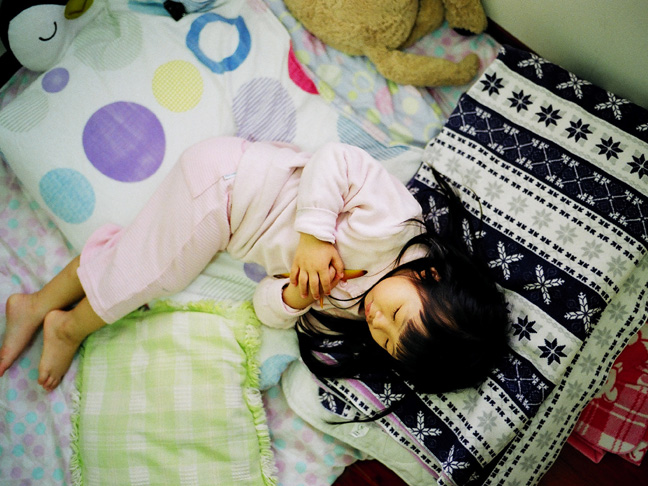Children will generally nap from the day they’re born until they’re 2- or 3-years-old. Parents often ask me, How long should children nap? It’s a good question, because naps are important for multiple reasons. See, sleep is the time during which the brain rests and grows and learning can occur. We also know that sleep begets sleep so that children who nap well during the day will often sleep better at night. To help determine whether your child is napping enough, here is an age-by-age guide to follow.
Newborns to 4-Months-Old
For the first 6 to 8 weeks of a child’s life, sleep is very random. There’s no such thing as a sleep schedule (unfortunately for parents!). Most infants need to eat frequently and can’t stay awake for long periods of time without becoming fussy or overtired. Try to have your child rest every 1.5 to 2 hours. Naps may be brief, lasting 20 to 40 minutes. This is normal, so don’t stress if your baby is taking short, frequent naps until around 12- to 16-weeks-old. At this age, your baby will be reliant on you for helping him fall asleep and soothing him — and that’s fine. You are not forming bad habits in little babies by helping them get the sleep they need.
4- to 9-Months Old
Around 4 months of age, children may fall into a more regular daytime sleep pattern. Typically they’ll start their day between 6 and 7 a.m. and take their first nap about 2 hours after waking up. A restorative nap is around one hour. The second nap is typically around 2 hours after waking from the first and there is usually a shorter third nap later in the day. Most children will drop the third nap somewhere between 6 and 9 months of age. If your baby takes 4 to 5 brief naps during the day, and she’s happy and playful and sleeping well at night — and that system works with your schedule — then that’s great! There is no “right” way to nap and your child does not have to be on a strict nap schedule. Go with what works for all of you.
9 to 18-Months-Old
Typically, children will nap twice a day until about 12 to 15 months of age. As he transitions to one nap, you may find that your toddler resists the morning nap and starts to go down later and later in the morning. The two naps may meld together into more of a brunch time nap, say 11:30 a.m., instead of two distinct naps. Most likely, the nap will slowly migrate to 12:30 or 1 p.m. and last for 1 to 3 hours. During that time, your child may seem more cranky in the early evening. If this is the case, try an earlier bedtime. By 18-months-old, most children are taking one nap a day.
18-Months- to 3-Years-Old
Most children continue to nap once a day until somewhere between 2- and 3-years-old. If your child is napping past 3-years-old, there is no need to be concerned. As long as she’s going to bed at a reasonable time and sleeping well at night, consider yourself lucky to still be getting that naptime break!
As with most things, every child is different. The most important thing is that you feel yours is well-rested and happy during the day. If you have any concerns about your child’s sleep patterns it is always best to reach out to your pediatrician.
Photo: Getty








